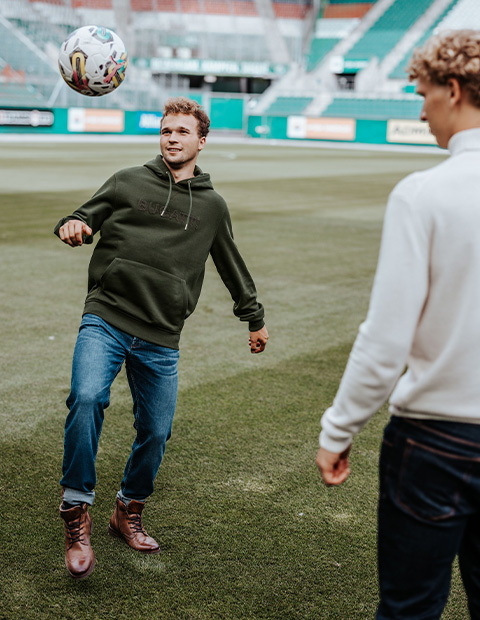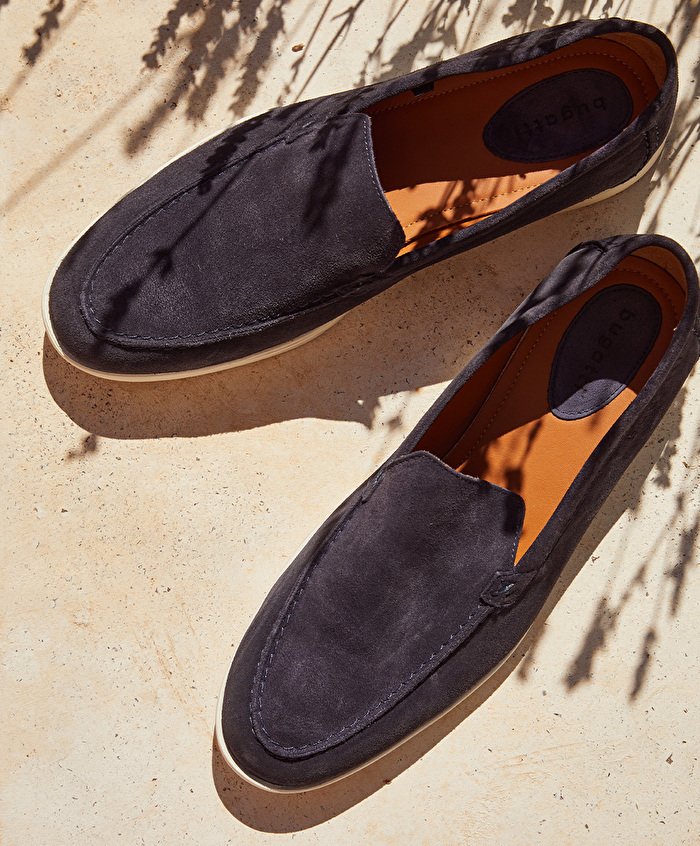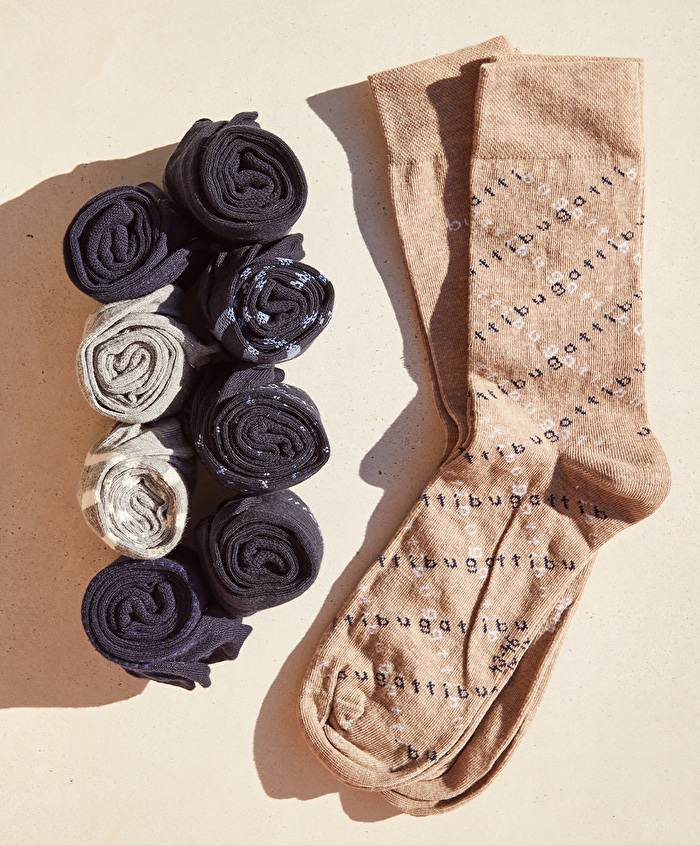Tie or bow tie, after all? What’s the correct choice on which occasion – bugatti explains!
What on earth am I going to wear today? Do I wear a tie with my suit, or maybe a bow tie, for a change?
Or imagine you have passed your exams; the stress of learning for them is behind you and it’s time to party. Now you have the prom to look forward to, and straight away, you’re facing the next stressful situation. What should I wear with my new smart two-piece outfit? A tie, or a bow tie after all? In actual fact, this question is not always easy to answer. Ties and bow ties come in a wide range of different fabrics, lengths and widths as well as colours and patterns. On top of that, the tie/bow tie also has to match not only the suit but also the shirt, or rather the shirt collar. Then there is the question of which outfit is suitable for which occasion.
We want to help you to find your way around in the world of ties and give you some tips on what accessories you should opt for.
From neckerchief to “croatta” (cravat) to today’s tie
No one is quite sure where ties originated. It is likely that even in ancient Rome and Egypt, people already tied lengths of fabric around their necks.
According to one legend, the predecessor of the tie, the cravat, was invented in 1663. That year, a military parade in which a Croatian cavalry regiment also participated was held in honour of King Louis XIV (1643 - 1715). One element of the Croatian soldiers’ uniform was a piece of white fabric – called a hravatska – fastened to the collar in the form of a rosette with loose ends that dangled on their chests.
The French – not least the exceedingly vain King Louis XIV, who immediately engaged a personal “cravatier” – adored this neck decoration. In a very short time, it became extremely fashionable and was henceforth called a “croatta” (based on la croate = the Croat), or cravat, throughout Europe.
Over the centuries, the neckerchief evolved continuously. Ties began to look like they do today roughly at the beginning of the 20th century.
In the 1950s, ties initially went out of fashion. They enjoyed a brief comeback in the 1960s, thanks to the Beatles, but disappeared again shortly afterwards in the hippie era.
This changed suddenly in the 1980s.
Pop icons like David Bowie and Brian Ferry made ties fashionable again
In the 1990s, the accessory was so common that companies included ties in their dress code and made their employees wear them at all times.
The bow tie – an accessory with a chequered history
The bow tie originated in France. The history of the bow tie – like the history of the cravat – began in the 17th century.
However, initially, the tie won the day. Bow ties did not become established as an obligatory morning and dress suit accessory until the early 20th century. From then onwards, the bow tie became increasingly popular and even a trademark for some of its famous fans such as Frank Sinatra or Winston Churchill, for example. By the 1950s, bow ties had at last become utterly fashionable; they were even a popular leisure time wear accessory.
However, after that, the popularity of bow ties was on the wane again. For the rebellious young people of the 1960s, the bow tie symbolised the establishment and they therefore eschewed it; older people soon followed this trend.
Nowadays, bow ties are once again considerably more trendy. The reason for this might well be the many entertainment industry celebrities that have discovered the bow tie as an eye-catching accessory, which may have brought it to the attention of their audiences.
The fundamental question – tie, bow tie or neither?
Most men still opt for a tie when they wear a suit or a two-piece outfit. If they were something else, they don’t wear a tie at all.
But why? A bow tie also goes perfectly with most ordinary suits. A bow tie upgrades even just a shirt worn with casually rolled up sleeves.
A tie also looks great with an outfit that consists of a jumper and a shirt, for example. Men’s fashion would certainly benefit from more daring and a willingness to experiment.
By the way: this question does not arise when you wear a morning or dress suit. A true gentlemen will always wear a bow tie with one of these!
A bow tie, the typical ball accessory
A bow tie is a firm component of formal evening wear. If the dress code specified for a special occasion is quite liberal, a bow tie also looks stylish worn with a dark navy suit, rather than a dress suit.
The first formal evening event many young people attend is their prom. Why not wear a bow tie on this special occasion? A dark suit, a fashionably cut shirt and a bow tie are the perfect outfit for this special evening to celebrate the fact that you have left school. If you have opted for a shirt with cuffs, smart cuff links are the perfect finishing touch.
If you are a bit more daring where fashion is concerned, you could wear a bow tie – which could also be made from cotton – rather than wearing the usual dark silk version. This would result in a more informal look.
A bow tie is not just elegant. It also offers practical advantages. When you wear a tie, you have to make sure that the end doesn’t dip into your food. That can’t happen with a bow tie. If you wear a tie, it’s all over the place when you dance with your suit jacket open. A bow tie stays firmly put.
Bow ties in the everyday business or leisure time wear area
Do you find it boring to wear a tie all the time? Then we have reassuring news for you: wearing a bow tie with your business suit is totally acceptable.
In fact, it can even make a welcome change! Ultimately, whether you wear a bow tie or not is a choice that depends on your type and personal style.
A bow tie can also be a good leisure time wear companion. Wear a bow tie to upgrade a shirt and stand out from the crowd. By the way, a pair of trousers worn with a waistcoat, a shirt and a bow tie is an increasingly popular party wear choice.
It also doesn’t take long to put on a pre-tied bow tie. However, passionate bow tie wearers will always prefer the self-tie version. Try it. It’s actually not that difficult, provided you know the right technique. If you don’t want to put this much effort into it, you can always opt for a pre-tied design.
The tie – the most common option for a suit
You will always be on the safe side with an understated tie. Some men actually feel more comfortable overall when they wear a tie. A tie can be loosened on occasion, or whenever they want to. A bow tie, on the other hand, fits snugly around the neck and make some men feel restricted.
However, when choosing a tie, you should make sure that it either matches the suit in an understated way or intentionally contrasts it. Remember to avoid too striking contrasts, though. Eye-catching patterns should also be approached with caution; don’t be too daring.
The width and length of the tie and the finished tie knot also have to match the shirt and suit. A slightly more voluminous tie with a wider knot, for example a Windsor knot, is a good choice for a shirt with a cutaway collar. Shirts with a Kent collar make things easier. All tie types and knots go with these.
Bow tie and tie – ideal companions for suits
In men’s fashion, a smart two-piece outfit generally consists of a suit jacket and a pair of trousers that are a different colour, have different patterns or are made from different fabrics but belong together. A bow tie or a tie is the perfect finishing touch.
LET YOUR IMAGINATION RUN WILD. YOU COULD, FOR EXAMPLE, WEAR A TIE OR BOW TIE IN A COLOUR THAT MATCHES THE COLOUR OF YOUR TROUSERS.
A pocket square in a matching colour, a smart leather belt to go with the trousers, a watch that reflects elegant understatement and fashionable leather shoes complete the outfit.
Wearing a tie with a jumper
A successful and also increasingly popular two-piece leisure time outfit version is a tie worn below a jumper. A V-neck jumper is the most suitable choice for this. However, you can also wear a tie with a crewneck jumper or a cardigan.
























